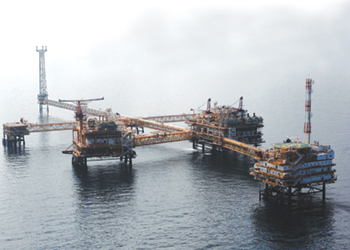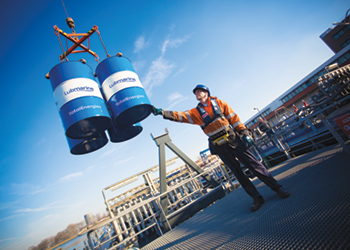
 Lubmarine's tailored lubrication is designed to manage modern marine engines
Lubmarine's tailored lubrication is designed to manage modern marine engines
There are three steps of effective engine lubrication including right engine oil selection, proper monitoring strategy and not forgetting the human element and engineer support, Serge Dal Farra, Marketing Manager, Lubmarine, tells OGN
THE development of low sulfur fuels through the introduction of IMO2020 has been the most significant change to the way in which the global fleet has been powered since the introduction of the diesel engines in the maritime industry a little over 100 years ago.
Whilst the use of low sulfur fuels has clear benefits on emissions reductions, what has been proven is that challenges around fuel quality - especially early 2020 - have brought real issues for modern two-stroke marine engines.
For not only are these engines sensitive to corrosion but they also face an increased risk of engine deposit buildup – potentially leading to problems including notably ring pack damage.
What is without question is that selecting the right cylinder oil in tandem with a properly managed Monitoring Programme in the post IMO2020 landscape has never been more important than it is today.
SELECTING THE RIGHT LUBRICANT
Lubmarine has developed a range of tailored lubrication formulations designed specifically to manage today’s modern marine engines, for all IMO2020 compliant fuels including LNG.
 |
Dal Farra ... solutions to effective engine lubrication |
Its premium Talusia Universal is a fully OEM-approved cylinder oil with a patented chemistry, proven with over 125,000,000 successful operating hours.
Tests show that Talusia Universal demonstrates a significant cleaning ability (detergency) and provides higher residual BN, enabling ship operators to optimise their feed rate and maintain the lube oil into the safe limits determined by the OEMs.
Additionally, Talusia Universal has been approved by WinGD as a ‘Dual Fuel validated’ product, one of the few cylinder oils on the market to have obtained this achievement.
The latest entry in the Lubmarine Talusia range of cylinder lubricant is Talusia HD 40 for which MAN ES has been granted a NOL Category II, meaning this product has excellent overall performance with a special focus on cleaning ability.
NOL Category II also means it’s applicable for all engines types and recommended for MAN B&W two-stroke engines Mark 9 and higher, providing operators with increased safety margins for very demanding engines.
“We are delighted with this latest recognition from MAN ES and we believe this new generation of cylinder lubricant will provide added safety margin for the ship operators,” says Stuart Fuller, Lubmarine’s Market Liaison and Product Manager responsible for MAN ES.
TAKING A MULTI-LAYERED APPROACH TO ENGINE CLEANLINESS
Using the right lubricant in the right amount to deliver optimum performance and effective engine cleanliness is just one piece in the puzzle.
Rising to the challenge requires an understanding of the multiple operating parameters of the engine, combined with smart engine monitoring and drain oil analysis and interpretation - something that can only be achieved with the support of a lubricant specialist.
By carefully and regularly monitoring lubricant and vessel machinery condition, ship owners together with their oil supplier can proactively detect and react to any abnormalities.
All OEM guidelines recommend careful engine monitoring and a sophisticated intelligence-led approach allowing for the most prudent management of two stroke marine engines.
IMPLEMENTING A ROBUST MONITORING PROGRAMME
Implementing an effective drain oil analysis programme is a simple, reliable and a proven way of helping optimise operations through lubricant consumption and component wear analysis.
Lubmarine is now taking this approach to new and data-focused levels with the launch of LubInsight Neo — a new range of fully digitalised, interconnected global on-board lubricant sampling and testing services.
Operators on board are guided through easy to follow, step-by-step on screen instructions when carrying out drain oil analysis without the need for specialist training, with the highly accurate test results uploaded onto the customers’ dedicated Lubmarine portal.
Not only do the new services - LubInsight Neo - enable vessel operators and owners to upgrade their onboard testing laboratory facilities, but they also deliver real-time interconnectivity between crews on the vessel, all on shore operations, owners, operators and global teams involved in the running and maintenance of the vessel.
THE HUMAN ELEMENT - SPECIALIST KNOWLEDGE AND INTERPRETATION
The third layer in achieving optimum engine performance including its cleanliness profile is to enlist the support of highly experienced engineers to assist with lubrication optimisation and any lubrication issues vessel operators might be experiencing.
This level of support can include:
• Ship engine inspections and trouble-shooting.
• Lubrication survey and technical investigations.
• Shipyard and switchover support.
• Crew and onshore teams trainings from lubrication basics to high level lubrication strategies.
CONCLUSION
There is no single solution to achieving the benefits that LOFR optimisation can deliver. It takes a multilayered approach, utilising the tools and knowledge with the support of a technical team and the infrastructure of a specialist lubricant manufacturer with the range of services available to support vessel operators.















































































